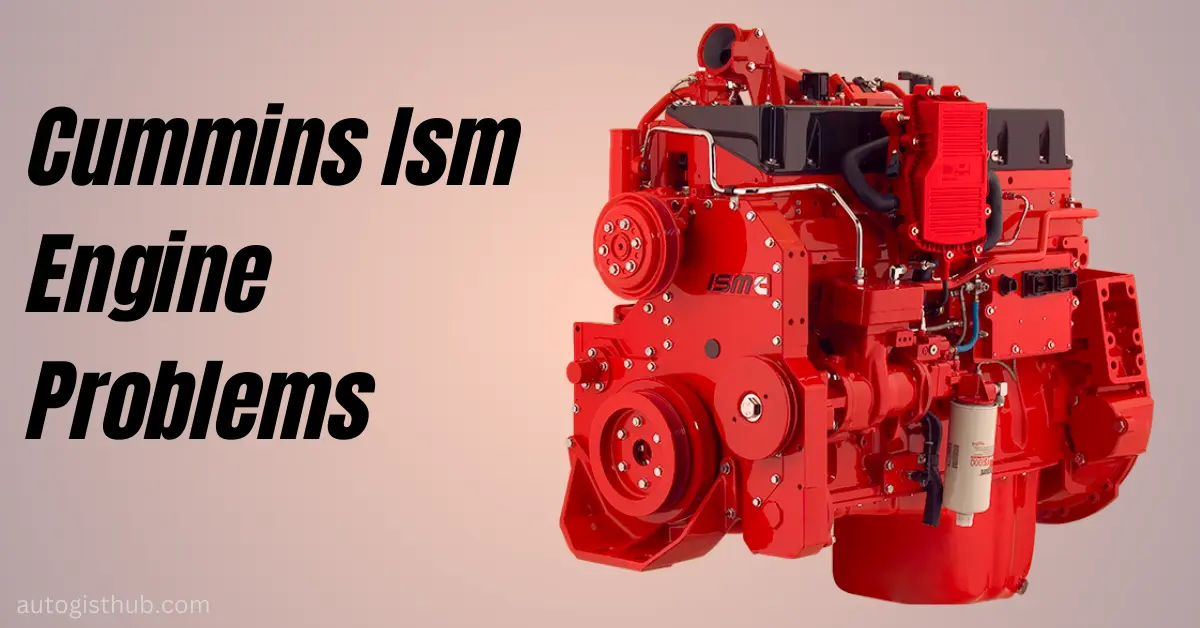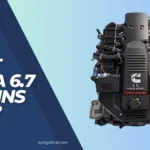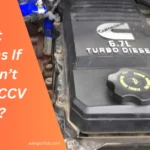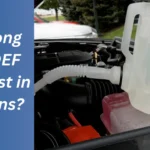Cummins ISM engines often face various problems, such as oil leaks, sensor failures, turbocharger issues, and fuel system malfunctions. These problems can lead to decreased engine performance and increased maintenance costs.
If not addressed promptly, they can also result in engine failure, downtime, and expensive repairs. To avoid such issues, regular maintenance, inspection, and adherence to manufacturer recommendations are essential for preserving the longevity and reliability of Cummins ISM engines.
Understanding the common problems associated with these engines can help owners and operators take proactive measures to prevent or mitigate potential issues, ensuring smooth operation and optimal performance.
Faulty Fuel System
Common Fuel System Problems in the Cummins Ism Engine
The Cummins ISM engine is a powerful and efficient choice for many heavy-duty vehicles. However, like any complex machinery, it can experience issues over time. One common problem that owners may encounter is a faulty fuel system.
The fuel system plays a critical role in delivering the right amount of fuel to the engine for combustion. When this system is compromised, it can lead to a variety of problems that affect overall performance.

In this section, we will explore some of the most frequent fuel system problems that Cummins ISM engine owners may face. By understanding these issues, you can be better prepared to diagnose and repair your engine, ensuring optimal performance.
Symptoms of a Faulty Fuel System in the Ism Engine
Identifying the symptoms of a faulty fuel system in your Cummins ISM engine is essential for effective troubleshooting. By being aware of these signs, you can take timely action to prevent further damage. Here are some common symptoms to watch out for:
1. Engine Misfires: If you notice your engine misfiring or hesitating during acceleration, it could indicate a problem with the fuel system. Insufficient fuel delivery or clogged injectors can disrupt the combustion process and result in misfires.
2. Power Loss: A faulty fuel system can cause a noticeable decrease in engine power. You may find it more challenging to achieve the same level of acceleration or towing capability as before. This can be attributed to a range of issues, including fuel pump failure or clogged fuel filters.
3. Hard Starting: Difficulty starting the engine, especially in colder temperatures, can be linked to a faulty fuel system. Insufficient fuel pressure or a malfunctioning fuel pump can make it harder for the engine to ignite and start.
4. Engine Stalling: A fuel system problem, such as a failing fuel pump or a clogged fuel line, can cause unexpected engine stalling. This can be particularly dangerous if it occurs while driving, resulting in a sudden loss of power steering and braking.
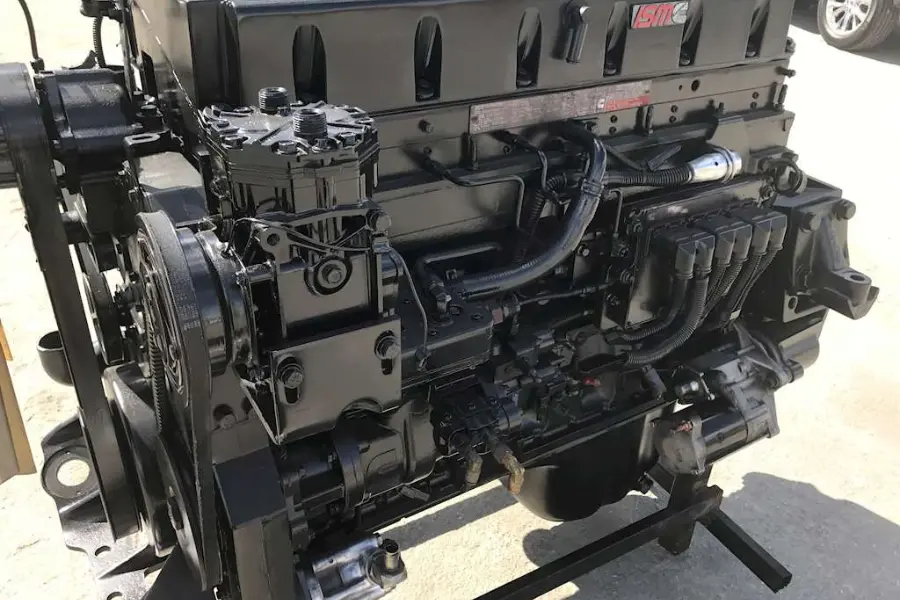
Steps for Diagnosing and Repairing Fuel System Issues
Once you suspect a faulty fuel system in your Cummins ISM engine, it’s crucial to diagnose and repair the issue promptly. Here are some steps to help guide you through the process:
1. Check for Error Codes: Begin by using a diagnostic scan tool to retrieve any error codes stored by the engine control module (ECM). These codes can provide valuable insights into the specific fuel system component that is causing trouble.
2. Inspect Fuel Filters: Inspect and replace the fuel filters if necessary. Over time, these filters can become clogged with dirt, debris, and water, hindering fuel flow. Regularly changing the filters as recommended by Cummins can help prevent fuel system issues.
3. Test Fuel Pressure: Use a fuel pressure gauge to measure the fuel pressure at various points in the system. Compare the readings to the specifications provided by Cummins to determine if the pressure is within the acceptable range.
4. Clean or Replace Injectors: If you suspect injector issues, consider either cleaning or replacing them. Injectors can become clogged or malfunction, affecting fuel delivery. Cleaning or replacement can often restore proper functioning.
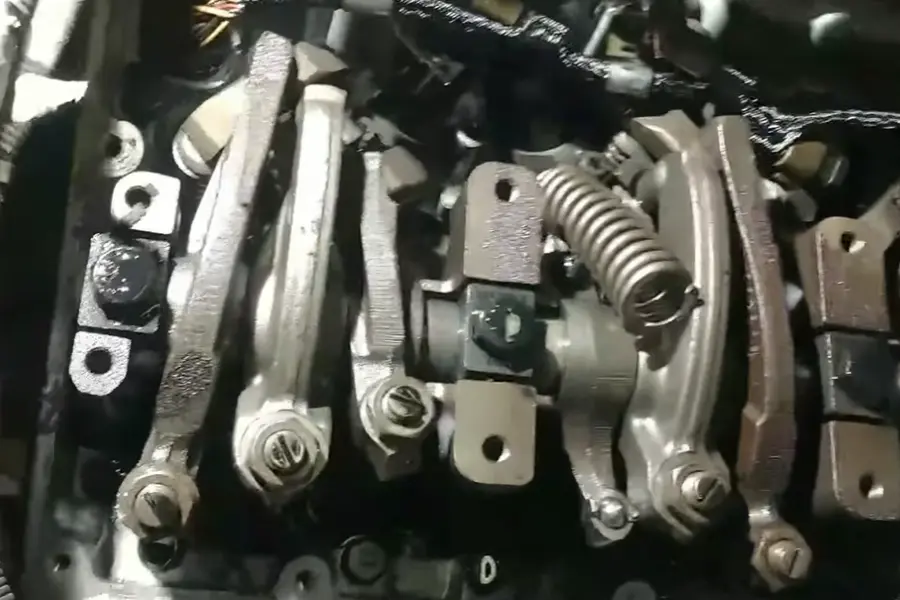
5. Inspect Fuel Lines and Connections: Visually inspect the fuel lines and connections for any signs of leakage, damage, or blockage. Address any issues found promptly, ensuring the integrity and optimum performance of the fuel system.
6. Check the Fuel Pump: Test the fuel pump for proper operation. A failing fuel pump can result in inadequate fuel pressure, leading to various fuel delivery issues. If the pump is faulty, replacement may be necessary. By following these steps and staying proactive in your fuel system maintenance, you can keep your Cummins ISM engine running smoothly and efficiently.
Don’t hesitate to consult a qualified technician if you are unsure or need assistance with diagnosing or repairing fuel system issues. Addressing these problems promptly will help avoid more significant damage and costly repairs down the line.
Warranty and Support
When it comes to purchasing a Cummins ISM engine, one of the essential aspects to consider is the warranty and support offered by the company. Cummins understands the importance of comprehensive warranty coverage and efficient technical support to provide their customers with peace of mind and assistance when needed. In this section, we will explore the warranty coverage for Cummins ISM engines, how to contact Cummins for technical support and assistance, and proactive measures to prevent ISM engine problems.
Warranty Coverage for Cummins Ism Engines
When investing in a Cummins ISM engine, it is vital to understand the warranty coverage provided by the company. Cummins offers a comprehensive warranty that ensures their customers are protected against any manufacturing defects or issues. The warranty typically covers the engine and its components for a specified period or mileage, whichever comes first.
The exact warranty coverage for Cummins ISM engines may vary based on the model and the application they are used in. However, Cummins is known for providing warranty coverage that includes major engine components such as the cylinder block, crankshaft, camshaft, and connecting rods. Additionally, the warranty may also cover other essential components such as the fuel system, turbocharger, and cooling system.
It is important to thoroughly review the warranty details provided by Cummins to understand the specific coverage for your Cummins ISM engine. This will help you have a clear understanding of the extent of coverage and any limitations that may apply.
Contacting Cummins for Technical Support and Assistance
In case you encounter technical difficulties or require assistance with your Cummins ISM engine, it is crucial to know how to reach out to Cummins for prompt and reliable support. Cummins is committed to providing exceptional customer service and has dedicated resources to address technical issues promptly.
To contact Cummins for technical support and assistance, you can reach out through their customer service hotline or send an email to their customer support team. The hotline is accessible 24/7, ensuring assistance is available whenever you need it. Their support team comprises knowledgeable professionals who are well-versed in Cummins ISM engines and can provide guidance, troubleshoot problems, and offer appropriate solutions.
When contacting Cummins, be sure to provide them with relevant information such as the engine model, serial number, and a detailed explanation of the issue you are facing. This will help the support team understand and diagnose the problem more efficiently, leading to a quicker resolution.
Proactive Measures for Preventing Ism Engine Problems
While Cummins ISM engines are known for their performance and reliability, it is always wise to take proactive measures to prevent potential problems. By implementing preventive measures, you can ensure the longevity and efficiency of your Cummins ISM engine, minimizing the chances of encountering major issues.
Here are some proactive measures you can take:
- Adhere to the recommended maintenance schedule provided by Cummins. Regular engine inspections, fluid checks, and filter replacements can help identify and prevent potential problems.
- Use high-quality fuel and lubricants that meet Cummins specifications. Poor-quality fuel and lubricants can adversely affect the engine’s performance and lead to premature wear and tear.
- Keep the engine clean and free from dirt and debris. Regularly inspect and clean the air intake and cooling system to ensure optimal airflow and cooling.
- Monitor engine parameters and diagnostic codes using Cummins’ electronic monitoring system. This enables early detection of any abnormalities, allowing timely intervention.
- Train operators and drivers on proper engine operation techniques, emphasizing the importance of warm-up and cool-down periods and avoiding excessive idling.
By following these proactive measures, you can minimize the risks of encountering ISM engine problems and ensure smooth operation and longevity for your Cummins ISM engine.
Cooling System Failures
Importance of The Cooling System in the Ism Engine
The cooling system plays a crucial role in maintaining optimal performance and preventing overheating in the Cummins ISM engine. It is responsible for regulating the engine’s temperature, ensuring that it remains within safe operating limits. With its intricate network of components, the cooling system helps cool down the engine and prevents damage caused by excessive heat.
Common Cooling System Failures and Their Causes
Despite its importance, the cooling system can experience certain failures, leading to potential issues with the Cummins ISM engine. These failures can be caused by various factors, including:
- Leaking coolant: Coolant leaks can occur due to damaged hoses, a faulty radiator, or a failing water pump. When coolant leaks, the engine may overheat, compromising its performance and potentially leading to catastrophic engine failure.
- Clogged radiator: A clogged radiator can result from the buildup of debris, dirt, or rust over time. This hinders the flow of coolant, causing the engine temperature to rise. If left unaddressed, a clogged radiator can lead to engine overheating and damage.
- Thermostat malfunction: The thermostat is responsible for regulating the flow of coolant in the cooling system. A malfunctioning thermostat can get stuck closed, preventing coolant flow and causing the engine to overheat. Conversely, a stuck-open thermostat can result in reduced engine performance and increased fuel consumption.
- Water pump failure: The water pump circulates coolant throughout the engine to facilitate heat transfer. Over time, the water pump can wear out or develop leaks, resulting in inadequate coolant circulation. This can lead to engine overheating and potential damage.
- Coolant contamination: Contaminated coolant can result from mixing different types of coolant or the introduction of external substances. This can diminish the coolant’s effectiveness in regulating temperature and potentially cause corrosion within the cooling system.
Maintaining and Troubleshooting the Cooling System
To prevent cooling system failures and ensure optimal performance of the Cummins ISM engine, regular maintenance and troubleshooting are essential. Here are a few steps to consider:
- Regularly inspect the cooling system for any signs of leaks, such as puddles or stains underneath the vehicle.
- Check coolant levels regularly and top up as needed, using the recommended coolant type for the ISM engine.
- Clean the radiator and remove any debris or obstructions that may hinder efficient heat dissipation.
- Monitor the temperature gauge during operation and address any sudden fluctuations or abnormalities promptly.
- Replace the thermostat at recommended intervals to ensure proper coolant flow and temperature regulation.
- Inspect the water pump for leaks, noise, or signs of wear, and replace if necessary.
- Flush and replace the coolant periodically, following the manufacturer’s guidelines for the ISM engine.
By proactively maintaining and troubleshooting the cooling system, you can minimize the risk of cooling system failures and ensure the longevity of your Cummins ISM engine.
Emission Control Problems
Emission control is a crucial aspect of modern engines, ensuring compliance with environmental regulations and minimizing the impact on the environment. However, even the reliable and superior Cummins ISM engine is not exempt from emission control problems. Let’s delve into the various issues that can arise in the emission control systems of the Cummins ISM engine and understand their impact.
Overview of Emission Control Systems in the Cummins Ism Engine
The Cummins ISM engine features advanced emission control systems designed to meet stringent regulations, such as those set by the Environmental Protection Agency (EPA). These systems employ innovative technologies such as exhaust gas recirculation (EGR), diesel particulate filters (DPF), and selective catalytic reduction (SCR) to effectively reduce harmful pollutants.
Exhaust gas recirculation (EGR) is used to redirect a portion of the engine exhaust back into the combustion chamber. This reduces the formation of nitrogen oxides (NOx), a significant contributor to air pollution.
The diesel particulate filter (DPF) traps and removes soot particles from the exhaust gases, preventing them from being released into the atmosphere. This helps in reducing particulate matter emissions, which is known to have adverse health effects.
Selective catalytic reduction (SCR) employs a catalytic converter and diesel exhaust fluid (DEF) to convert nitrogen oxides (NOx) into nitrogen (N2) and water vapor. This technology plays a crucial role in reducing NOx emissions, which are harmful to both human health and the environment.
Common Emission Control Problems and Their Impact
Despite the advanced emission control systems implemented in the Cummins ISM engine, certain issues can arise, impacting the engine’s performance and emission levels. It’s crucial to be aware of these problems to ensure prompt resolution and maintain regulatory compliance.
1. Poor EGR Performance: If the exhaust gas recirculation (EGR) system malfunctions, it can lead to increased nitrogen oxide (NOx) emissions. This not only compromises the engine’s efficiency but also contributes to air pollution and environmental degradation.
2. DPF Clogging: Over time, the diesel particulate filter (DPF) can become clogged with soot particles. A clogged DPF restricts exhaust flow, resulting in reduced engine performance and increased emissions. Regular maintenance and cleaning of the DPF are essential to prevent such issues.
3. SCR System Failure: In some cases, the selective catalytic reduction (SCR) system may encounter issues, leading to increased NOx emissions. This can happen due to factors like contaminated DEF, faulty sensors, or problems with the catalytic converter. Timely inspection and maintenance of the SCR system are necessary to maintain effective emission control.
Compliance and Maintenance of Emission Control Systems
To ensure compliance with emission regulations and optimal performance, it is important to prioritize the regular maintenance of the emission control systems in the Cummins ISM engine. Here are some key aspects to consider:
- Follow Manufacturer Guidelines: Adhere to the manufacturer’s guidelines for maintenance and servicing of the emission control systems. This includes recommended maintenance intervals, inspection procedures, and replacement of components when necessary.
- Regular Inspections: Conduct regular inspections to identify any potential issues with the EGR, DPF, and SCR systems. Prompt troubleshooting and repair can prevent further damage and ensure compliance with emission standards.
- Proper DEF Usage: Use high-quality diesel exhaust fluid (DEF) that meets the required specifications. Contaminated or incorrect DEF can lead to SCR system failure and increased emissions.
- Keep DPF Clean: Take proactive measures to keep the diesel particulate filter (DPF) clean. This can involve regular cleaning procedures or seeking professional assistance for the thorough cleaning of the DPF.
- Address Issues Promptly: If any emission control problems arise, address them promptly by consulting a qualified technician. Delaying repairs can not only result in increased emissions but may also lead to costly engine damage.
By prioritizing compliance and maintenance of the emission control systems in the Cummins ISM engine, you can ensure optimal performance, minimize emissions, and contribute to a cleaner and healthier environment.
Electrical System Malfunctions
Understanding the Electrical System of the Cummins Ism Engine
The electrical system of the Cummins ISM engine is a crucial component that powers various components and ensures the smooth operation of the engine. Understanding how this system works is essential for identifying and resolving potential issues.
The electrical system consists of key elements such as the batteries, alternator, starter motor, ignition system, sensors, and various other electrical components. These components work together to provide power and control vital functions of the engine.
Potential Issues With the Electrical System
The Cummins ISM engine may experience several electrical system malfunctions, leading to performance issues and potential breakdowns. These problems can arise due to various factors such as aging components, loose connections, faulty wiring, or environmental factors.
Here are some common electrical system problems that Cummins ISM engine owners may encounter:
- Starting Issues: Difficulty starting the engine can be an indication of a faulty starter motor, weak battery, or problems with the ignition system. Troubleshooting these components is crucial to ensure proper engine startup.
- Charging Problems: If the alternator fails to charge the batteries properly, it can result in drained batteries and a lack of power supply for other electrical components. Regular inspections and testing of the alternator can help prevent charging issues.
- Malfunctioning Sensors: The Cummins ISM engine relies on a network of sensors to monitor crucial parameters and ensure optimal performance. Sensor malfunctions can lead to inaccurate readings, engine misfires, and compromised fuel efficiency. Regular sensor checks are necessary to maintain proper engine functionality.
- Electrical Shorts and Wiring Issues: Loose connections, damaged wires, or electrical shorts can disrupt the flow of electricity within the Cummins ISM engine. These issues can cause intermittent power loss, engine stalling, or even electrical fires in extreme cases. Regular inspections and proper wiring maintenance can help mitigate such problems.
- Fuse Failures: Fuses protect various electrical components from excessive current and prevent damage. If fuses blow frequently, it may indicate an underlying issue, such as a short circuit or a malfunctioning component. Identifying the cause of fuse failures is crucial to prevent further electrical system damage.
Troubleshooting Steps for Resolving Electrical Problems
Resolving electrical problems in the Cummins ISM engine requires a systematic approach. By following these troubleshooting steps, you can identify and address electrical issues efficiently:
- Inspect Connections: Start by checking all electrical connections for looseness, corrosion, or damage. Tighten loose connections and clean corroded terminals to ensure proper electrical flow.
- Test Batteries: Use a multimeter to check the voltage levels of the batteries. If they are below the recommended threshold, recharge or replace them as necessary to ensure adequate power supply.
- Check Alternator Output: Test the alternator’s output using a voltmeter. A low output may indicate a faulty alternator that needs replacement or repair.
- Verify Sensor Functionality: Use diagnostic tools to check the functionality of sensors. Replace any malfunctioning sensors to maintain accurate data monitoring.
- Inspect Wiring: Carefully inspect the wiring harnesses for signs of damage or loose connections. Repair or replace damaged wires, and secure loose connections to prevent power interruptions.
- Test Fuses: Check all fuses in the electrical system and replace any blown fuses. Investigate the cause of blown fuses to prevent future electrical system failures.
By following these troubleshooting steps, Cummins ISM engine owners can tackle electrical system malfunctions promptly and ensure the smooth operation of their engines. Regular maintenance and periodic inspections play a vital role in preventing these problems and maximizing the reliability of the electrical system.
Engine Oil and Lubrication Issues
The engine oil and lubrication system play a crucial role in the performance and longevity of Cummins ISM engines. By providing a protective barrier between moving parts, engine oil reduces friction and wear, removes heat from components, and prevents the accumulation of harmful deposits. However, like any mechanical system, the engine oil and lubrication system can encounter problems that need to be addressed to ensure optimal engine performance.
Understanding the Role of Engine Oil And Lubrication in The Ism Engine
In order to comprehend the significance of engine oil and lubrication in the Cummins ISM engine, it is essential to understand the specific responsibilities they fulfill. The engine oil lubricates various components, such as the pistons, crankshaft, and camshaft, reducing the friction between them.
Additionally, it helps to cool down these parts by absorbing heat and transferring it to the oil cooler. The engine lubrication system, on the other hand, ensures that all of the engine’s moving parts are adequately lubricated.
Signs of Engine Oil and Lubrication Problems
Identifying signs of engine oil and lubrication issues is crucial for diagnosing problems early on and preventing potential engine damages. Here are some common indicators that may suggest a problem with engine oil and lubrication:
- Low oil pressure warning light or gauge reading
- Excessive engine noise, particularly a knocking or ticking sound
- Increased fuel consumption
- Visible oil leaks around the engine
- Black, gritty, or milky appearance of the engine oil
- Overheating of the engine
Best Practices for Maintaining and Resolving Issues With Engine Oil and Lubrication
Effectively maintaining and resolving engine oil and lubrication issues ensures optimal performance and durability of the Cummins ISM engine. Here are some best practices to consider:
- Regularly check and maintain proper oil levels by following the manufacturer’s recommendations.
- Inspect the engine oil for any signs of contamination or degradation, such as unusual color, presence of particles, or excessive foaming.
- Perform routine oil changes according to the recommended intervals to promote clean and effective lubrication.
- Ensure the correct type and grade of engine oil are used, as specified by the manufacturer.
- Address any oil leaks promptly to prevent loss of lubrication and potential engine damage.
- Regularly inspect and maintain the oil filters to prevent clogging and improve oil circulation.
- Periodically inspect and clean the oil cooler to maintain efficient heat transfer.
- Consult with a qualified technician to diagnose and resolve any engine oil and lubrication issues promptly.
By adhering to these best practices, you can mitigate potential engine oil and lubrication problems, ensuring the long-term reliability and performance of your Cummins ISM engine.
Understanding the Cummins Ism Engine
Overview of the Cummins Ism Engine
The Cummins ISM engine is a powerful and reliable workhorse that has made its mark in the industry. Known for its exceptional performance and durability, this engine has become a popular choice for a wide range of applications, from heavy-duty trucks to industrial equipment.
The ISM engine is a successor to the highly acclaimed M11 engine and was designed to meet the stringent emission standards set by the Environmental Protection Agency (EPA). Its advanced fuel system and electronic controls ensure optimal performance while maintaining low emissions.
With displacement options ranging from 10.8 to 11.8 liters, the Cummins ISM engine is capable of delivering impressive power and torque. Its robust construction and heavy-duty components make it suitable for even the most demanding operating conditions.
Key Features And Specifications of the Ism Engine
The Cummins ISM engine comes packed with a range of innovative features and specifications that set it apart from its competitors.
- Fuel Efficiency: With advanced electronic controls and fuel system technology, the ISM engine offers excellent fuel efficiency, helping businesses save on operational costs.
- Power and Torque: Available in various horsepower options, the ISM engine delivers exceptional power and torque, ensuring superior performance and acceleration.
- Reduced Emissions: The ISM engine incorporates advanced exhaust after-treatment systems to meet strict emissions standards, resulting in cleaner and more environmentally friendly operations.
- Reliability and Durability: Designed with heavy-duty components and robust construction, the ISM engine is built to withstand the toughest operating conditions, ensuring maximum uptime and longevity.
The ISM engine also boasts an intelligent electronic control module (ECM) that continuously monitors and optimizes engine performance, providing real-time diagnostics and maximizing efficiency.
Importance of the Ism Engine in the Industry
The Cummins ISM engine plays a vital role in various industries and applications. Its exceptional performance, reliability, and efficiency have made it a preferred choice for many businesses.
In the transportation industry, the ISM engine powers heavy-duty trucks, enabling efficient and cost-effective transportation of goods across long distances. Its fuel efficiency not only helps reduce operating costs but also contributes to a greener environment by minimizing emissions.
Moreover, the ISM engine finds its application in industries like construction, agriculture, and mining, where the need for powerful and reliable equipment is paramount. Its robust construction and high torque output make it ideal for powering heavy machinery and equipment.
Common Issues With Cummins Ism Engine
If you own a Cummins ISM engine, it is essential to be aware of the common problems associated with it. Knowing these issues can help you identify potential malfunctions early on and take necessary measures to prevent further damage. In this section, we will discuss the most prevalent problems with the ISM engine, factors leading to malfunctioning, and the impact of these issues on the engine’s performance and efficiency.
Identifying The Most Prevalent Problems With The Ism Engine
When it comes to Cummins ISM engines, certain issues tend to surface more frequently than others. By understanding these common problems, you can save yourself from unexpected downtime and costly repairs. Some of the most prevalent problems with the ISM engine are:
- Oil Leaks: One of the significant issues faced by ISM engine owners is oil leakage. This can occur due to various factors such as faulty gaskets, seals, or worn-out components. If left unnoticed, oil leaks can lead to engine overheating and damage to internal components.
- Turbocharger Failure: The ISM engine is equipped with a turbocharger that plays a critical role in maximizing power and efficiency. However, turbocharger failure is a common problem encountered by ISM engine owners. This can be caused by factors like excessive wear and tear, oil contamination, or improper maintenance.
- Fuel System Problems: Fuel system issues can significantly impact the performance of the ISM engine. Common problems include clogged fuel injectors, fuel pump failure, or fuel contamination. These can result in reduced power, decreased fuel efficiency, and potential engine stalling.
- Exhaust Gas Recirculation (EGR) System Failure: The EGR system in the ISM engine is responsible for reducing emissions and improving fuel efficiency. However, malfunctioning EGR valves or clogged EGR coolers can lead to engine misfires, increased emissions, and reduced overall performance.
- Electrical Faults: Electrical problems can arise due to faulty wiring, connection issues, or damaged sensors. These can cause intermittent or permanent engine malfunctions, leading to poor performance, engine misfires, or even complete engine failure.
Factors Leading to Ism Engine Malfunctioning
Understanding the factors that contribute to ISM engine malfunctioning is crucial in preventing and addressing these issues promptly. Several factors can lead to engine malfunctions, including:
- Poor Maintenance: Inadequate or improper maintenance practices can cause several problems with the ISM engine. Neglecting regular oil changes, failing to clean or replace filters, and ignoring necessary inspections can lead to engine malfunctions and reduced longevity.
- High Engine Mileage: As an engine ages, it becomes more prone to various problems. Cummins ISM engines with high mileage are more susceptible to issues such as oil leaks, turbocharger failure, and worn-out components.
- Environmental Factors: Harsh operating conditions, extreme temperatures, and prolonged exposure to pollutants can accelerate wear and tear on the ISM engine. These factors can contribute to premature failure of engine components and overall engine malfunctioning.
- Component Defects: Sometimes, manufacturing defects or faulty components can lead to engine problems. It is essential to address any component defects or recalls promptly to ensure optimal engine performance.
Impact of Ism Engine Problems on Performance and Efficiency
ISM engine problems can have a significant impact on its performance and efficiency. When these issues are left unaddressed, they can result in:
- Reduced Power Output: Engine malfunctions can cause a decrease in power output, leading to sluggish acceleration and poor overall performance.
- Poor Fuel Efficiency: Fuel system problems or turbocharger failure can lead to decreased fuel efficiency, resulting in additional operating costs for vehicle owners.
- Increase in Emissions: Malfunctioning components like the EGR system can increase emissions, contributing to environmental pollution and non-compliance with emission regulations.
- Higher Maintenance Costs: Ignoring engine issues can lead to severe damage, necessitating costly repairs or even engine replacement, resulting in substantial financial burdens.
It is crucial for Cummins ISM engine owners to address these problems promptly to maintain optimal performance, reliability, and longevity of their engines. Regular maintenance, timely inspections, and immediate attention to any signs of malfunctioning can help prevent further damage and ensure a smooth running engine.
FAQs On Cummins Ism Problems
Yes, the Cummins ISM is a reliable and high-performing engine. It offers excellent power and torque, along with advanced fuel efficiency and durability. Cummins ISM is a popular choice for heavy-duty trucking applications, providing a trustworthy and efficient solution for transportation needs.
ISM stands for Interact System Module on a Cummins engine. It is an advanced technology that allows the engine to interact with other vehicle systems, resulting in improved performance and fuel efficiency. The ISM helps to optimize engine functions, monitor diagnostics, and communicate vital information to enhance overall engine performance.
Yes, the Cummins ISM 500 is a good engine. It is powerful, reliable, and provides excellent performance. It is widely used in various applications and has a proven track record of durability and efficiency. The Cummins ISM 500 is a trusted choice among many industries.
Conclusion
In a world where efficient performance and reliability are paramount, addressing Cummins ISM problems is crucial. By understanding common issues like oil leaks, fuel injector failure, and coolant leakage, you can ensure continued smooth operation.
Regular maintenance and timely repairs will not only extend the lifespan of your engine but also enhance its overall performance. Stay proactive and keep your Cummins ISM running at its best for years to come.
